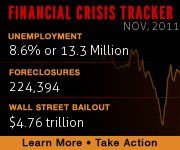Phi Beta Iota: The idea of one mobile per person was originally devised by the Earth Intelligence Network, and is articulated in both brief form and in a full-length book. Now the idea is emerging, spontaneously, from others. Below is a link to a letter in the Journal of Health Informatics in Developing Countries.
Letter: One mobile per child: a tractable global health intervention
The authors, Prajesh Chhanabhai and Alec Hold, one working at the University of Otago in New Zeland, the other for the Department of Economic and Soical Affairs in the United Nations, make several important points, not least of which is the price point: mobile telephones are being offered in Venezuela for $15, which is half the price the World Bank negotiated with Motorola.
If and when the Chinese see the opportunity (free cell phone, no extra charge for listening in), we should see both free cell phones and eventually free airtime as well as free call centers to educate the poor “one cell call at a time” at the same time that we recoup the investment in elevated national productivity, now proven to be associated with the diffusion of cell phone access.
It merits observation that the cell phone is now the “gift of life” that any one of the one billion rich (80% of whom do not give to charity now) can endow, down to a specific person in a specific village. The sooner we make cell phones ubiquitous, the sooner we can start exposing corruption at all levels (with web sites that make sense of text messages and expose corruption in near-real-time “by name,” and also creating infinite wealth among the four billion at the “bottom of the pyramid.” The human brain is the one inexhaustible resource we have, giving every human a cell phone is the fastest way to harnessing the distributed intelligence of the Whole Earth.
Interesting Side Note: Carlos “slim” Helu (richest person in the world) has a major stake in Tracfone (some phones go for $10). He could be a major player in the one mobile per child campaign. Venezuela president Hugo Chavez has a Twitter account and the Earth Intelligence Network just posted >> earthintelnet @chavezcandanga “the Vergatario” ($15 phone) + Carlos “Slim” Helu ? http://phibetaiota.net/?p=25785 #Vergatario #Venezuela #CarlosSlim

 Excellent May 31, 2010 New Yorker article by William Finnegan called Letter from Mexico, Silver or Lead which is unfortunately only available by subscription only
Excellent May 31, 2010 New Yorker article by William Finnegan called Letter from Mexico, Silver or Lead which is unfortunately only available by subscription only 




